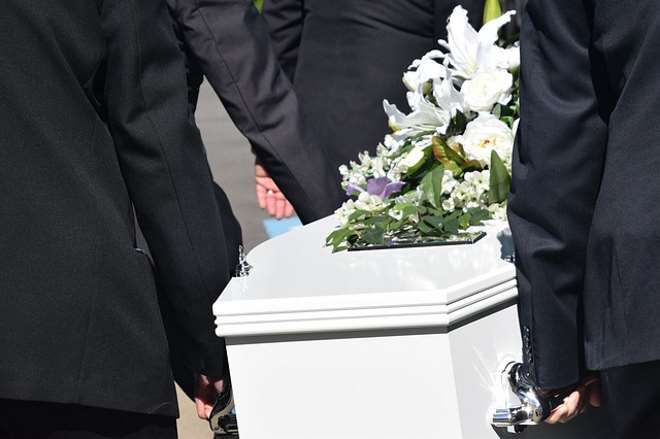Understanding Cremation Services in the U.S.: What Families Should Know When Planning Ahead
Cremation has become an increasingly common choice for families in the U.S. seeking a respectful and simplified end-of-life option. This article offers a clear overview of how cremation services work, what factors to consider when making arrangements, and how to ensure the process aligns with personal, cultural, or financial preferences.

How Cremation Services Work in the U.S.
The cremation process in the United States follows strict regulations that vary by state but maintain consistent standards for dignity and safety. After death occurs, the body is typically held at a funeral home or crematory facility where proper identification procedures take place. A medical examiner or coroner may need to issue a death certificate before cremation can proceed, especially in cases involving unexpected deaths.
The actual cremation process involves placing the body in a cremation chamber heated to temperatures between 1,400 and 1,800 degrees Fahrenheit. This process typically takes two to three hours, after which the remaining bone fragments are processed into fine ash. Families can expect to receive the cremated remains within several days to a week, depending on local processing times and paperwork requirements.
Reasons Families Choose Cremation
Modern families select cremation for various personal, practical, and financial considerations. Environmental concerns play a significant role, as cremation requires less land use than traditional burial and eliminates the need for embalming chemicals. Many families appreciate the flexibility cremation offers for memorial services, allowing them to hold celebrations of life at meaningful locations or times that work better for extended family members.
Religious and cultural acceptance of cremation has grown significantly, with many faiths now embracing the practice. Additionally, families who move frequently or have members scattered across different states often find cremation provides easier options for keeping loved ones close or dividing remains among family members.
Key Considerations When Planning Ahead
Planning ahead for cremation services requires attention to both legal and personal preferences. Pre-planning allows individuals to specify their wishes clearly, reducing emotional burden on family members during difficult times. Important decisions include choosing between direct cremation or cremation with a traditional funeral service, selecting an appropriate cremation provider, and determining whether witnessing the cremation process is desired.
Families should also consider timing factors, as some states require waiting periods before cremation can occur. Documentation needs vary by location, but typically include death certificates, cremation authorizations signed by next of kin, and any required permits. Pre-arranging these details ensures the process proceeds smoothly according to personal wishes.
Options for Memorialization
Cremation opens numerous possibilities for meaningful memorialization that traditional burial may not offer. Families can choose from various urn styles, from simple containers to elaborate artistic pieces that reflect the deceased’s personality. Some families opt to divide cremated remains among multiple family members, creating several smaller memorial pieces.
Creative memorialization options include incorporating ashes into jewelry, artwork, or even artificial reefs for ocean placement. Memorial gardens, columbarium niches, and scattering ceremonies at significant locations provide additional ways to honor loved ones. Many families find comfort in combining multiple approaches, such as keeping some ashes in an urn while scattering others in a meaningful location.
Understanding Local and Legal Guidelines
Each state maintains specific regulations governing cremation services, making it crucial to understand local requirements. Some states mandate waiting periods of 24 to 48 hours before cremation can begin, while others require specific authorization forms from multiple family members. Certain locations restrict where ashes can be scattered, particularly in public spaces, waterways, or private property.
Unique aspects of cremation regulations in the United States include requirements for crematory licensing, operator certification, and facility inspections. The Federal Trade Commission’s Funeral Rule protects consumers by requiring funeral homes to provide detailed price lists and allowing families to purchase cremation services without buying additional products. Understanding these protections helps families make informed decisions while avoiding unnecessary expenses.
| Service Provider | Basic Cremation Cost | Full Service Cost | Notable Features |
|---|---|---|---|
| Neptune Society | $1,295 - $1,995 | $2,500 - $4,000 | National network, pre-planning options |
| Cremation Solutions | $895 - $1,395 | $2,000 - $3,500 | Direct cremation focus, online arrangements |
| Local Funeral Homes | $1,000 - $2,500 | $3,000 - $6,000 | Personalized service, community connections |
| Costco Funeral Services | $1,399 - $1,699 | $2,500 - $3,800 | Member pricing, partnership with funeral homes |
Prices, rates, or cost estimates mentioned in this article are based on the latest available information but may change over time. Independent research is advised before making financial decisions.
Understanding cremation services empowers families to make informed decisions that align with their values, preferences, and circumstances. By considering the process, legal requirements, memorialization options, and associated costs, families can plan ahead effectively while ensuring their loved ones receive dignified, respectful care. The growing acceptance and flexibility of cremation services continue to provide meaningful alternatives for honoring life while meeting diverse family needs across the United States.




